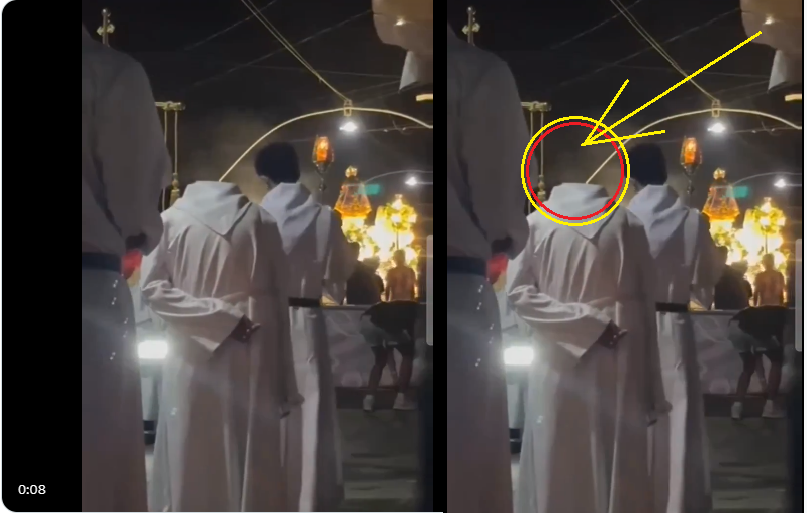In a recently captured moment during the procession of Sto Niño church in Kawit, Cavite, a peculiar incident unfolded as a man, seemingly a priest, was recorded on camera. The distinctive feature that has generated significant attention and speculation is that the man appeared without a visible head. Cloaked in a white, long gown typically worn by priests during religious ceremonies, the mysterious figure has sparked superstitious beliefs and discussions within the local community.
The short video clip not only showcases the enigmatic priest-like figure but also captures the devout crowd participating in the traditional practice of lighting candles. This ritual holds deep significance for Catholic Christians in the Philippines, as it symbolizes their faith, prayers, and devotion during religious events.
The convergence of this mystical sighting with the customary candle-lighting ceremony has intensified the intrigue surrounding the incident, giving rise to various interpretations and superstitious beliefs among the believers in the country.
Nakuhanan sa Sto Niño procession sa Kawit, Cavite by EJ Tiglao. pic.twitter.com/mzPSD5nc48
— @pauloinmanila and 99 others (@pauloMDtweets) January 14, 2024
Superstitious beliefs in the Philippines are deeply ingrained in the country’s culture and folklore, reflecting a blend of indigenous animistic traditions and influences from centuries of colonization. Here’s a summary of some prevalent superstitious beliefs in the Philippines:
- Aswang: The aswang is a mythical creature often associated with shape-shifting and malevolent behavior, believed to transform into various animals or humans to harm or consume flesh.
- Tikbalang: A half-horse, half-human creature, the tikbalang is thought to reside in forests and mountains. Crossing its path is considered bad luck, and some believe that making noise while passing through its territory can ward it off.
- White Lady: Ghost stories abound in Filipino folklore, with the White Lady being a common spectral figure often seen on roads or in abandoned places. Encounters with the White Lady are believed to bring misfortune or even death.
- Duwende: These are small, gnome-like creatures believed to inhabit certain areas like mounds or anthills. Filipinos often construct their homes in ways that avoid disturbing the supposed dwellings of duwendes to prevent bad luck.
- Siyokoy: Siyokoy is a sea creature resembling a merman, believed to reside in coastal areas. Stories suggest that encounters with siyokoy can bring harm or illness to fishermen and coastal communities.
- Pamahiin (Superstitions): Filipinos follow various superstitions in daily life. For example, there are beliefs related to mirrors, black cats, and sweeping at night, which are often avoided to prevent bad luck.
- Manananggal: A mythical, shape-shifting creature, the manananggal is said to separate its upper torso from its lower body to fly at night and prey on pregnant women. Garlic, salt, and religious artifacts are believed to ward off this creature.
- Pamana (Ancestral Spirits): Many Filipinos believe in the presence of ancestral spirits, and certain rituals are performed to honor and seek guidance from them. Disrespecting the spirits may lead to misfortune.
These superstitious beliefs contribute to the rich tapestry of Filipino culture, influencing practices, behaviors, and even architectural choices. While some may dismiss them as mere folklore, these beliefs continue to play a significant role in shaping the beliefs and actions of many Filipinos.
What can you say about this video? If you have something to say about this, share it on the comment section.





